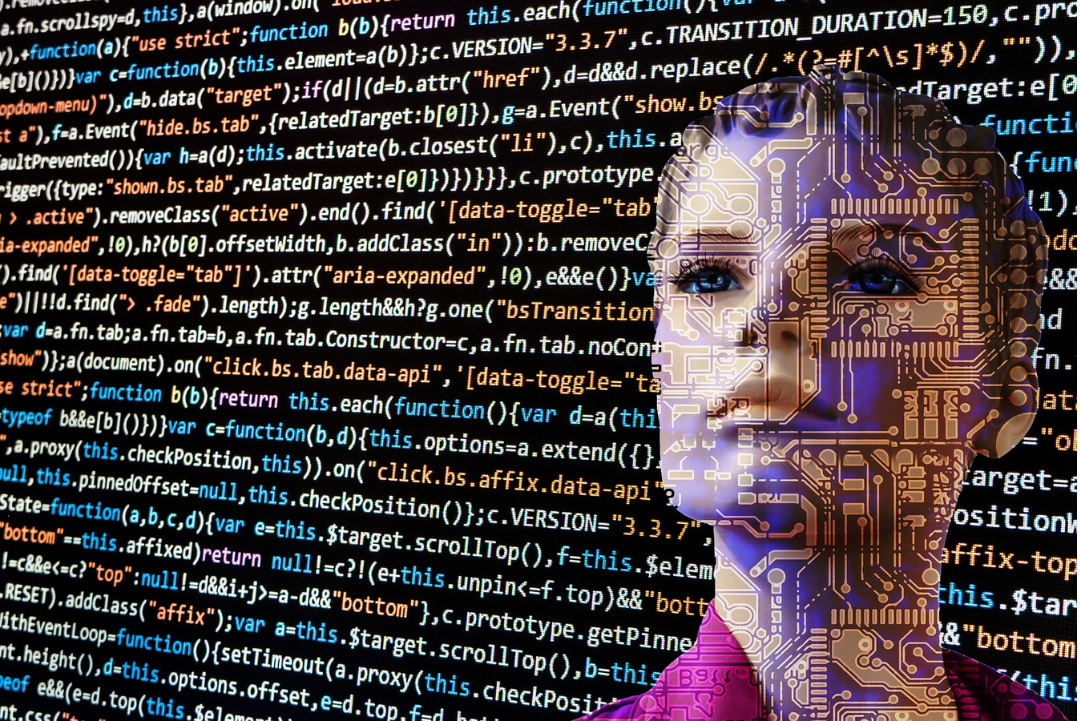CAREER GROWTH
THE POWER OF DATA AND AI IS IN YOUR HANDS: 5 EMERGING TRENDS
SEPTEMBER 02, 2022

Will you control data or let data control you?
It was the question raised by Atcha Abe, Technical Community Manager of Edukasyon.PH, during her talk "Keeping Up With Technology: Trends in Data and AI" at Recruitday's Community Socials last August 5. It's a relevant question that made the participants think of their roles as IT professionals in today's data-driven world, where businesses and organizations rely on information to understand consumer behavior and design products and services. It's not impossible to get carried away by massive amounts of data that you forget your ability to utilize it accordingly. Some people even fall to fake news and misconceptions caused by groups that use data with malicious intent.
As an IT professional, you have the skills and knowledge to navigate the technology field, but as they say, with great power comes greater responsibility. It is in your hands how to wield data and artificial intelligence (AI) tools, and it all starts with being on your toes with the latest technologies and understanding the power they have.
5 Trends in Data and Artificial Intelligence
Statistics show that the world generates 2.5 quintillion bytes of data every day. Imagine a stack of 10 million Blu-ray discs reaching the height of four Eiffel Towers to give you a picture. That's how much data is being produced from the photos we upload to social media to the rovers sent to Mars to gather information. With such massive numbers, it's no wonder Big Data has triggered the need for more advanced technologies. It helps us identify patterns to predict incidents affecting people's lives, such as voting results and epidemics.
Being in the tech profession requires you to keep up with the trends to become more effective in your career and develop the skills necessary to control and manage the data humankind generates.
1. Artificial Intelligence (AI)
Devices are getting smarter by the day. From smartphones featuring voice assistance and facial recognition to self-driving cars and robotic process automation, machines are becoming human-like. They can now learn from experience and carry out human tasks. Deep learning and natural language processing enable experts to train computers to process enormous amounts of data and recognize patterns to accomplish different tasks.
An example is Amazon Alexa. The device allows users to build a smart home through an app connected to various appliances. You can make Alexa turn on the lights, play music, and even watch your house while you're gone through voice commands.
2. Everything/Anything as a service & no-code revolution
Companies now have more flexible options for IT solutions with XaaS, which is the delivery of various solutions, technologies, and tools as a digital service. Instead of making a traditional purchase or getting a license model that comes with fixed payment at a physical store, companies can now receive digital services via the internet or a network. The Covid-19 pandemic propelled this service to popularity as remote work became the new normal.
Microsoft 365, Salesforce, and Amazon Web Services are some examples of XaaS. These IT solutions use cloud and remote computing domains. They are designed for digital consumption for easier deployment, fast remote implementation, and minimized cost.
Accessibility seems to be the theme the tech industry has been carrying over the past few years. Aside from XaaS, the no-code/low-code revolution is another trend that's making waves, especially for those wanting to build websites without a background in programming and coding. Anyone can be a maker nowadays, thanks to graphical user interface-based tools such as the following:
- Webflow for responsive CMS-driven sites
- Shopify for e-commerce shopping sites
- Octane AI for Facebook Messager bots
- Bubble for web app development
- Thunkable for mobile app development
- And more!
While these tools eliminate the need for coding expertise to create something on the internet, it's dangerous to think that they will replace the work of developers and other IT professionals. The no-code revolution doesn't aim to eradicate programming or high-code development. Instead, it optimizes the IT role by advancing legacy systems, removing technical debt, and accelerating build applications. They help IT professionals focus on creative work by removing menial tasks such as maintaining outdated back-end systems. In simpler terms, it makes life easier for IT professionals.
3. Digitization & datafication
Digitization is converting physical objects or attributes into a digital representation we can view, use, or interact with on a computer. Classic examples are scanning documents and turning them into PDF files or transferring the content of a VHS tape into a digital file to edit or manipulate. While we have been using digitization for years, it has become more rampant with the advent of remote work. Employees exchange files over the internet as they limit face-to-face interactions. Companies are gearing towards paperless transactions to minimize costs and promote environment-friendly operations. Documents are now accessible, shared, and signed in with just a few clicks.
Next is datafication, where almost everything we do is transformed into data, a numerically quantified format. We generate data when we call or text someone, watch a movie on Netflix, post on Facebook, shop online, use an ATM, or even pass by a security camera. These significant amounts of data are then analyzed and interpreted to understand human behavior, identities, and preferences. Organizations utilize such insights to make impactful decisions and shape society. As datafication becomes crucial, new technologies rise to collect, store, process, and visualize the data to make predictions.
4. Extended reality and synthetic data
Extended reality (XR) refers to immersive technologies that blend the physical and virtual worlds. The most common and popular types of XR are augmented reality (AR), virtual reality (VR), and mixed reality (MR).
- Augmented Reality – games like Pokemon GO are a classic example of AR, allowing the user to interact with digital elements like images, text, and animation in the real world. Using AR glasses, they can see virtual information and objects placed around their physical surroundings. AR also powers Snapchat filters, allowing digital things to be put on your person.
- Virtual Reality (VR) - in virtual reality, users can fully experience a simulated digital environment that allows them to carry out tasks in their avatar forms. An example is the metaverse, a virtual world imitating daily life. You can socialize with other users, participate in activities, attend events, and even shop. Companies utilize the metaverse to interact with their customers. They build a branded world that highlights their products and services and allows users to "travel" to their stores without leaving their homes.
- Mixed Reality (MR) - digital and physical objects merge in real-time in mixed reality. Also called hybrid reality, MR requires an MR headset and higher processing power. Microsoft's HoloLens explores MR by enabling users to interact fully with digital objects. For instance, you can place a digital bed in your actual room and move it around to see where it would fit best.
If you think the world is becoming more digital than ever, it doesn't stop with XR. Synthetic data is a whole new level of creating digital data. With synthetic data, developers, engineers, and data scientists have the freedom to create whatever data they want at the scale they need. They don't have to rely on incomplete or unreliable data, as they can just build it based on their specifications.
Synthetic data is a powerful tool, but it also comes with risks with the emergence of deepfakes. Deepfake technology is synthetic media that includes falsified content. It can create the exact replica of faces, speeches, and movements and manipulate emotions. Deepfakes of celebrities and public figures have already been made, and the audience won't know that they’re not real. With malicious intent, someone can use deepfake technology to put another person in trouble by imitating an action they did not commit.
5. Small data & TinyML
We're all familiar with the term Big Data, or the massive amounts of data that only computer systems can handle and analyze. However, there are a bunch of IT experts and researchers who are beginning to see the future small data and Tiny Machine Learning (ML) can bring.
Contrary to Big Data that's impossible for humans to manage, small data is accessible, informative, and actionable enough for individuals to comprehend. Small data is often ignored and left unused despite its ability to reflect behavior patterns. The reason is that organizations are so used to processing large datasets. However, since small data is understandable, it can substantially impact instances requiring quick decision-making.
Meanwhile, TinyML is a new AI technology gaining popularity for its flexibility and cost-effectiveness. TinyML has embedded systems, runs on microcontrollers, and only requires minimal latency, power, and bandwidth to work. TinyML devices consume a thousand times less energy than standard machine learning systems. and can even process ML applications on edge using batteries for weeks and months.
Because of its minimal requirements, TinyML devices make a big difference in projects and areas with limited connectivity, like industrial predictive maintenance in remote locations and agriculture.
The trends in data and AI are mind-boggling. It's an exciting journey for IT professionals passionate about technological innovation as the room to grow and learn keeps expanding. While the fields of AI and data evolve, it is up to you, as a tech practitioner, to draw the line between what's ethical and not. It takes wisdom to determine how to control data rather than let it control you. It is also a moral duty and responsibility to advance your tech skills, talents, and intelligence for the good of the community.
So, let’s end the discussion with a question: Will you control data or let data control you?
Ready to join a tech workforce of driven and motivated professionals? Check the available tech jobs in your chosen track, register in training courses to upskill, or refer your friends and earn today.
SEPTEMBER 02, 2022


